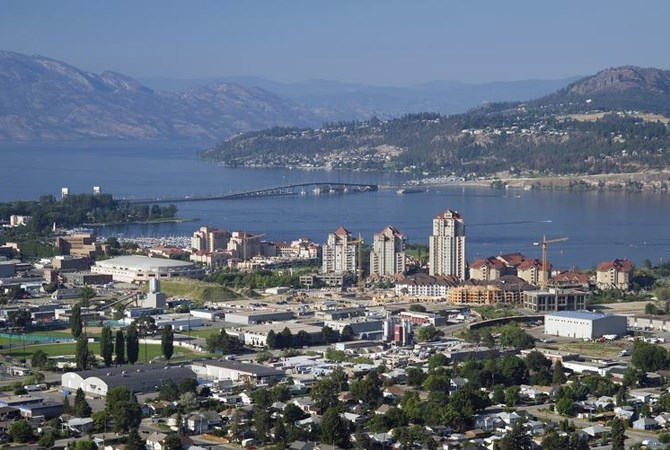
Image Credit: Shutterstock
September 16, 2016 - 6:30 PM
KELOWNA – Despite a big jump in the number of new homes being built in Kelowna recently, prices keep climbing. Yet experts say demand will continue to outpace supply in the Okanagan for the foreseeable future.
The reasons for this housing boom and seller’s market are due to several factors.
Okanagan Mainline Real Estate Board president Anthony Bastiaanssen says the average price of a home in Kelowna has gone up almost $100,000 in the last year. And that’s not dropping back down any time soon.
He says the current climate in Kelowna and most of the Central Okanagan is reminiscent of the months immediately prior to the market collapse at the end of 2007. In March of that year, 642 homes were sold, only six more than in March 2016.
“The pricing now has exceeded where it was then but it’s very comparable,” he says.
Elsewhere in the Okanagan the situation is similar although not as pronounced.
Over the last year, the average price of a home in the Okanagan has jumped by around $50,000. The average price in August — $464,981.64 — was 2.4 per cent lower than July, but 11.5 per cent higher than August 2015.
And while housing sales in Vancouver dropped 25 per cent over the past 12 months, as of July, there had been a 51 per cent increase in sales over the previous year in the Central Okanagan and 25 per cent increase across the entire Okanagan.

Image Credit: File photo
The depressed economic situation in Alberta has not impacted sales in the Okanagan Valley nearly as much as some analysts predicted, Bastiaanssen says, because those buyers, who made up roughly one-fifth, have been replaced by buyers fleeing the extreme Vancouver market.
“It’s speculative but it seems to make pretty good sense that we’re seeing Lower Mainland people cashing out,” he says. “Previously we had close to 20 per cent of our buyers coming from Alberta and historically the Lower Mainland has been closer to the ten per cent mark. In the last year that has literally flipped.”
Another factor that makes the Okanagan an attractive investment market is the growing demand for housing. With a vacancy rate between 0.5 and one per cent when it should be closer to three per cent, Kelowna is one of the easiest cities in B.C. to find tenants.
“We want more of a balanced market but we’re waiting for the new products to come online,” Bastiaanssen says.
The B.C. Non-Profit Housing Association’s rental housing index says a significant portion of Kelowna renters spend half of their income on housing. To fight this the city approved plans for more than 300 new rental units this year - almost as much as were built between 2010 and 2014.
Microsuites have also been built to provide housing for lower income families. Some developers have even been able to take advantage of two different rental housing incentive programs offered by the City of Kelowna for the same development. Despite this, demand has brought the proposed rent for some of these microsuites up to $1,500 per month.
“It simply isn’t sustainable,” Bastiaanssen says.
There was some speculation a new tax on foreign buyers investing in the Lower Mainland market would send them shopping elsewhere, however Bastiansson says only two per cent of property sales in the Okanagan come from foreign buyers.
Most buyers, 60 per cent, already live somewhere in the Okanagan, followed by buyers from the Lower Mainland or Vancouver Island at 18 per cent, nine per cent move here from Alberta and seven per cent from elsewhere in B.C.
“We saw no change in foreign buyers here,” he says.

Image Credit: Shutterstock
What has changed in the last several years is the number of jobs available to skilled workers and the number of students coming here to get those skills.
According to a small business B.C. report, the Okanagan tech sector contributed $1.3 billion to the overall local economy last year, 30 per cent more than two years ago.
“These figures are significant as they represent an increase of over $300 million of revenue contribution to the Okanagan economy since 2013 — an unprecedented 30 per cent growth rate in two years,” the report says. “For reference, in 2013 the overall BC technology industry contributed $23 billion to the economy, with a 5.2 per cent annual growth.”
According to the survey, there are 633 technology businesses with a collective workforce of 7,600 employee in the Okanagan. In 2013, 558 tech businesses employed 6,551 employees.
And roughly 18,000 students in Kelowna doesn’t hurt the Central Okanagan’s image as a boom town.
“We’ve been in a solid seller's market for a good while now,” Bastiaanssen says. “The industry forecast is we expect things to continue on a positive trend in the Central Okanagan over the next year. Not at the same pace but a slightly moderated pace.”
To contact a reporter for this story, email Adam Proskiw or call 250-718-0428 or email the editor. You can also submit photos, videos or news tips to the newsroom and be entered to win a monthly prize draw.
We welcome your comments and opinions on our stories but play nice. We won't censor or delete comments unless they contain off-topic statements or links, unnecessary vulgarity, false facts, spam or obviously fake profiles. If you have any concerns about what you see in comments, email the editor in the link above.
News from © iNFOnews, 2016